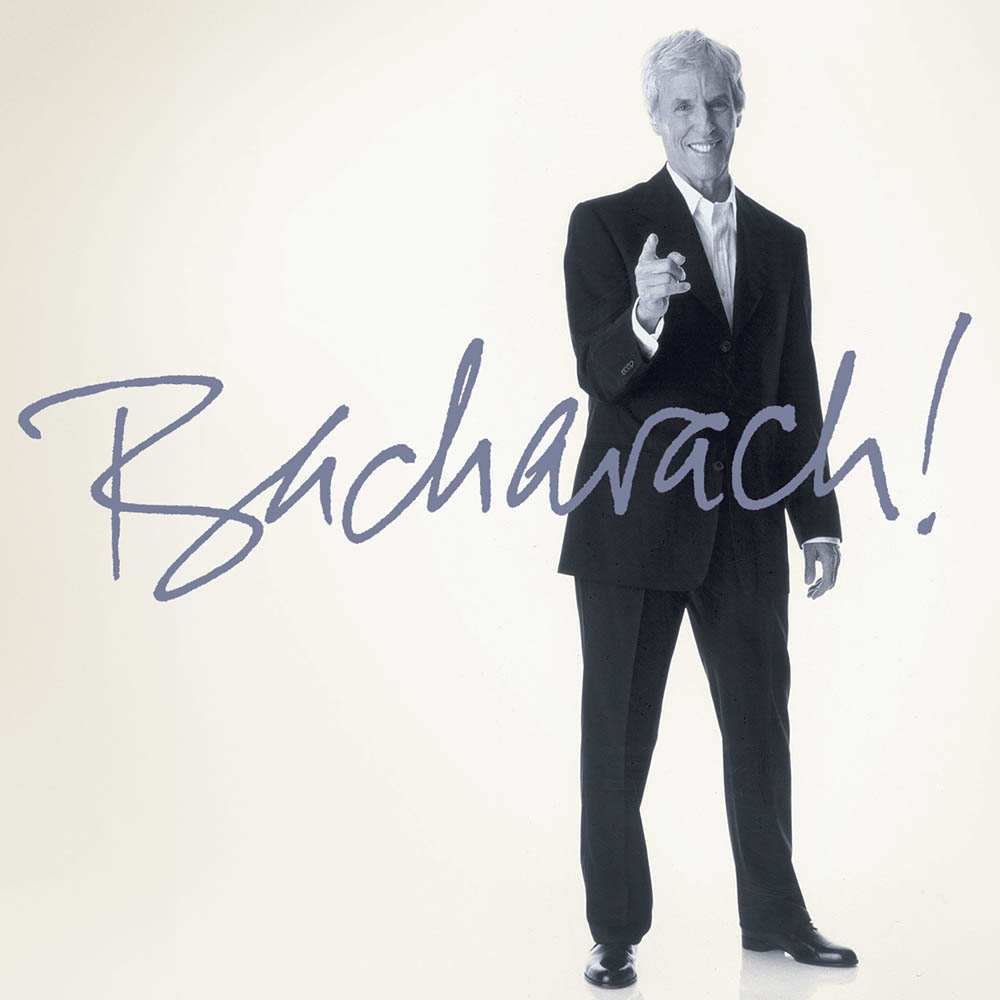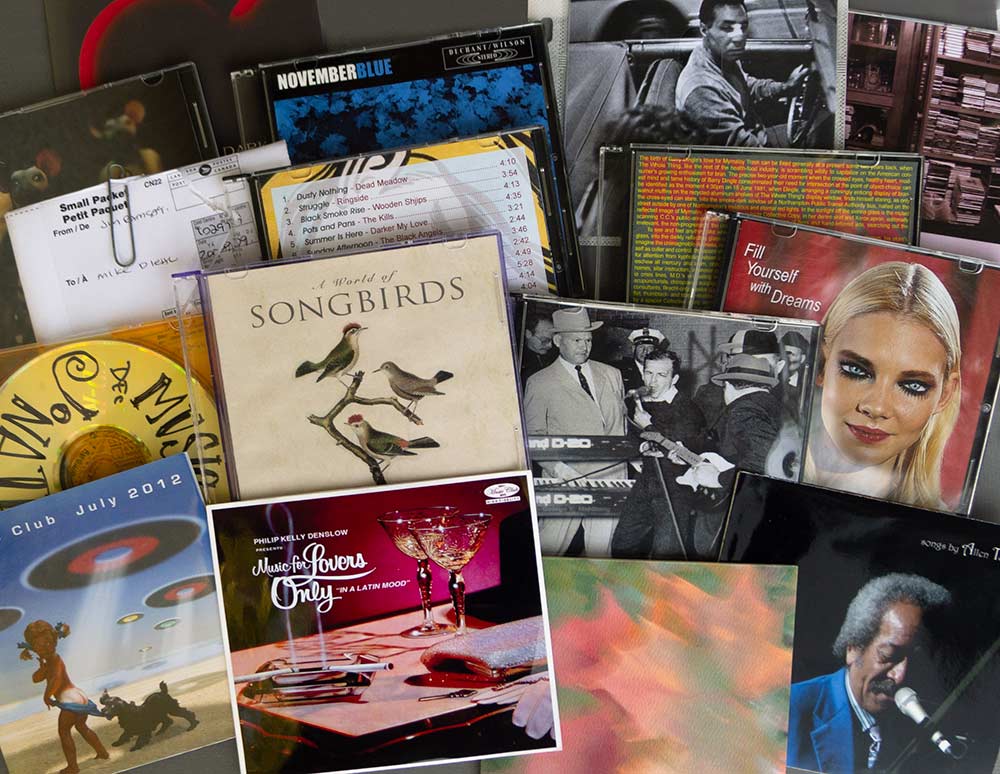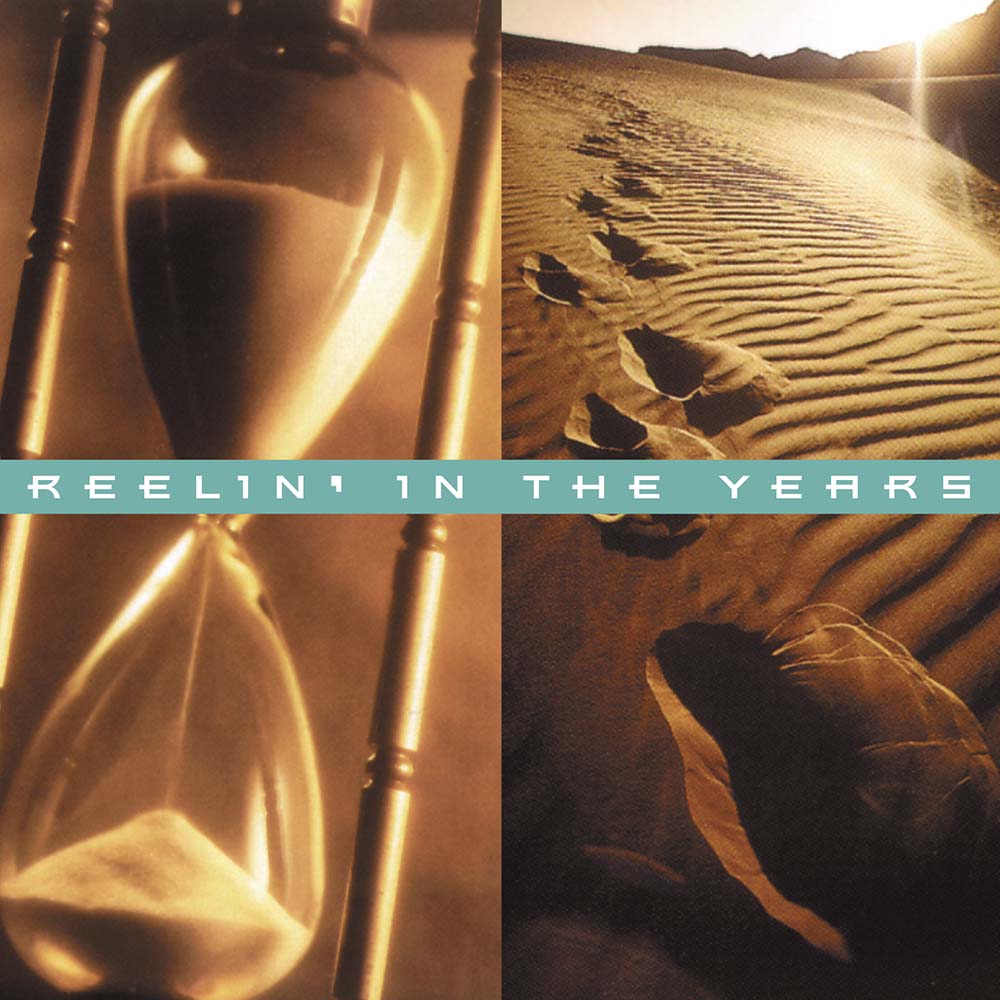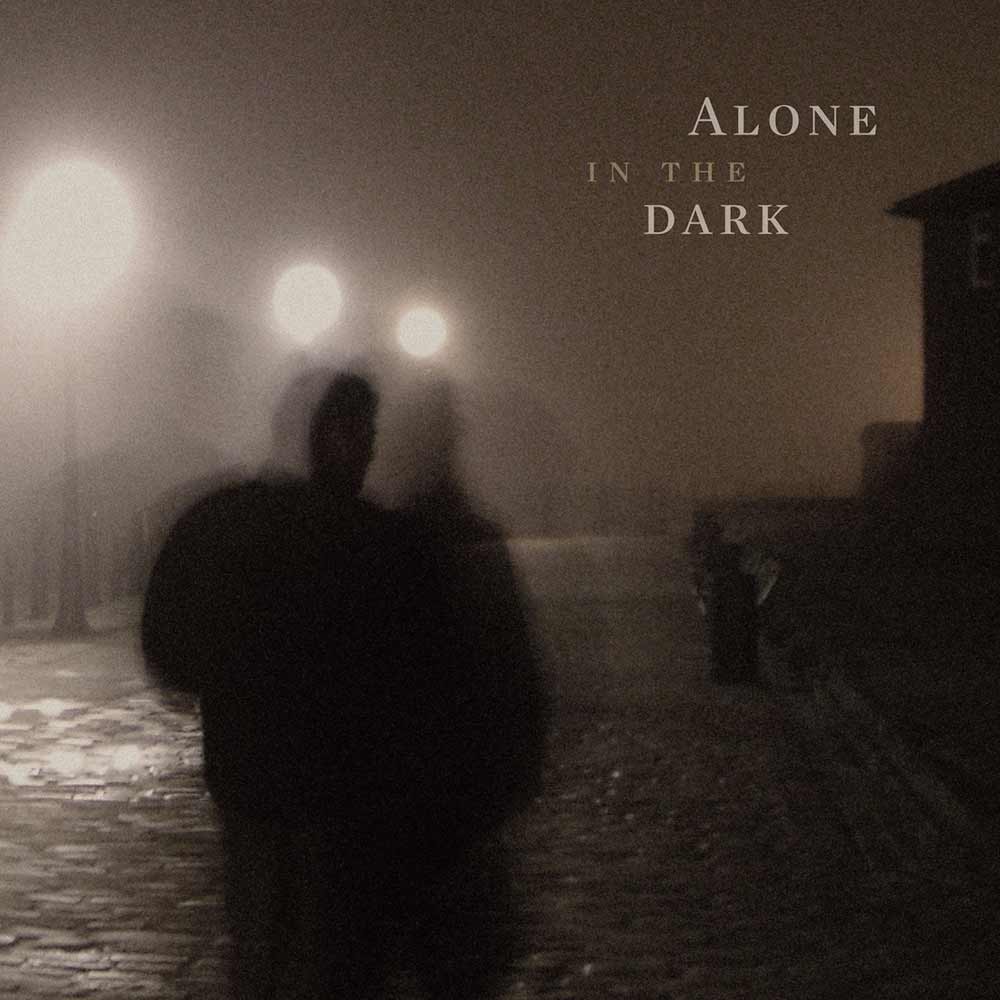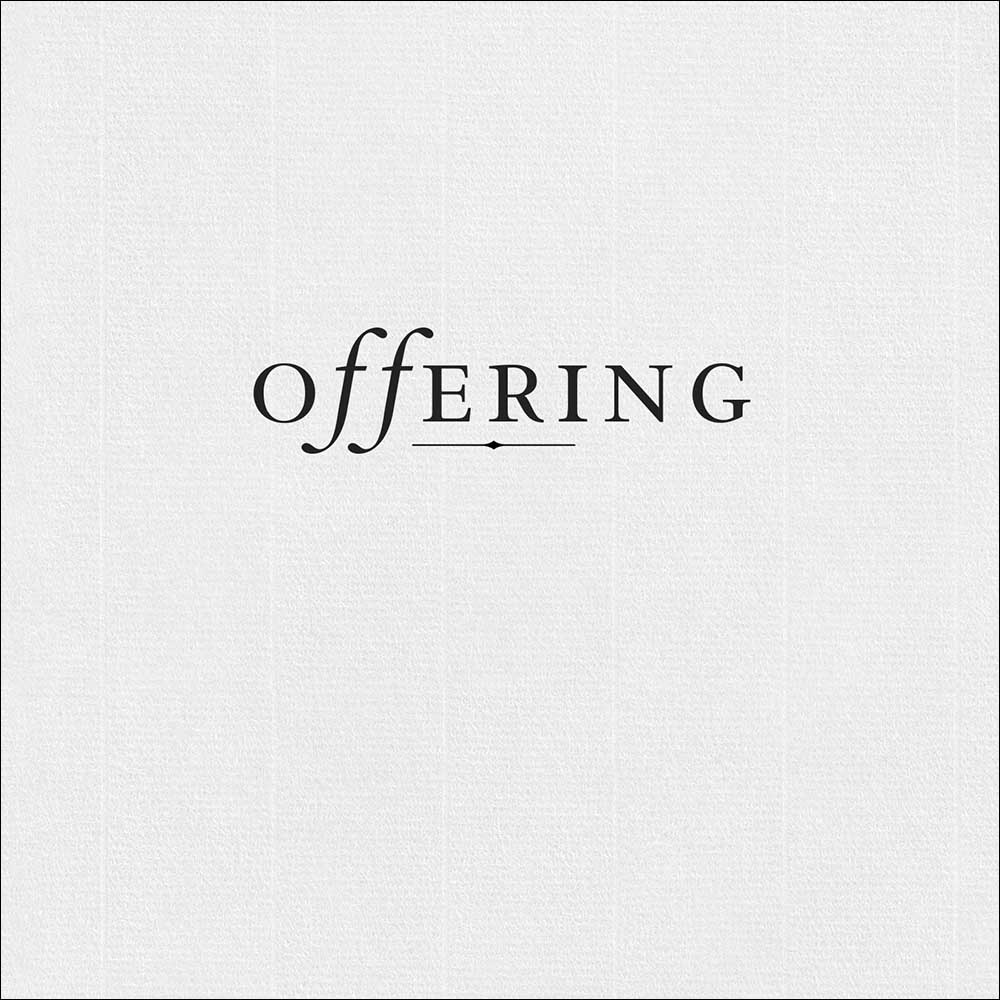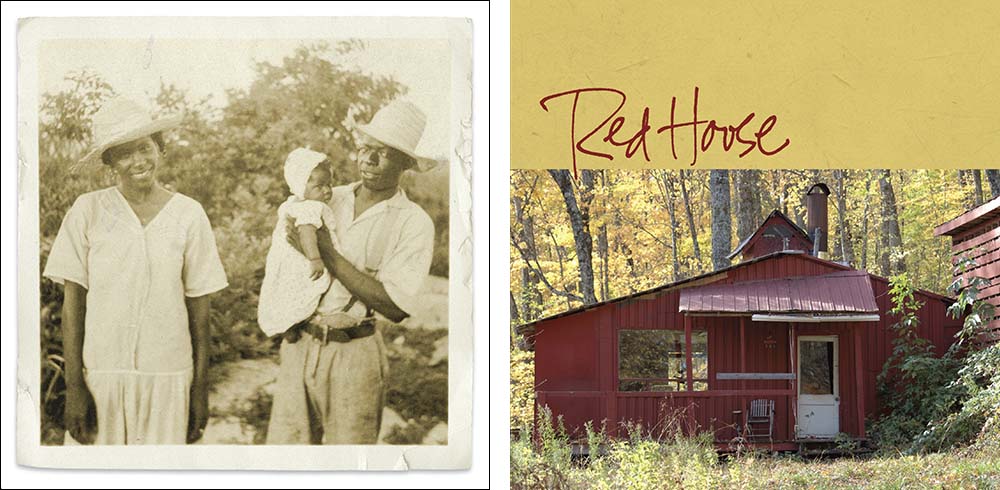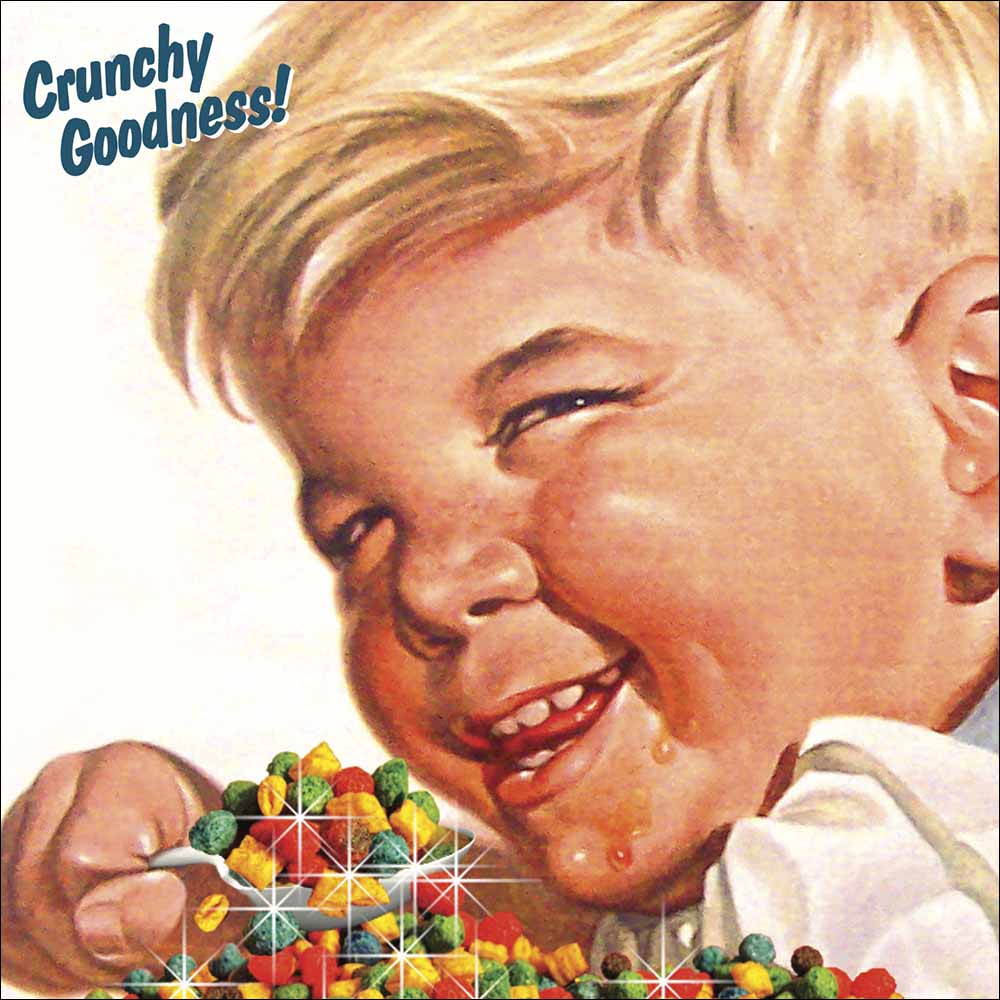, I’ve loved music — pop music, mostly, and rock ’n’ roll, though my interests have expanded over the years to embrace most genres.
I’ve also, of course, long been enamored by the commercial arts — record, book and magazine covers, and as I’ve said elsewhere in these pages, advertising, publication design, and much more.
Back when I first had the capability to merge these two loves — in fact, about the time I began working as a designer for record companies — I discovered the joy of mixtapes, and started compiling selections of music, coming up with titles, and creating graphics for them.
My earliest cassettes were distillations of various genres. Among them was Granddads, a 1980 mix of the earliest creators of rock ’n’ roll, including Chuck Berry, Little Richard, Buddy Holly and Elvis Presley; and Don’t Forget the Motor City, a collection of my favorite Motown songs. Others focused on big band music, piano jazz, and blues. A few featured instruments: drums, harmonica and saxophone.
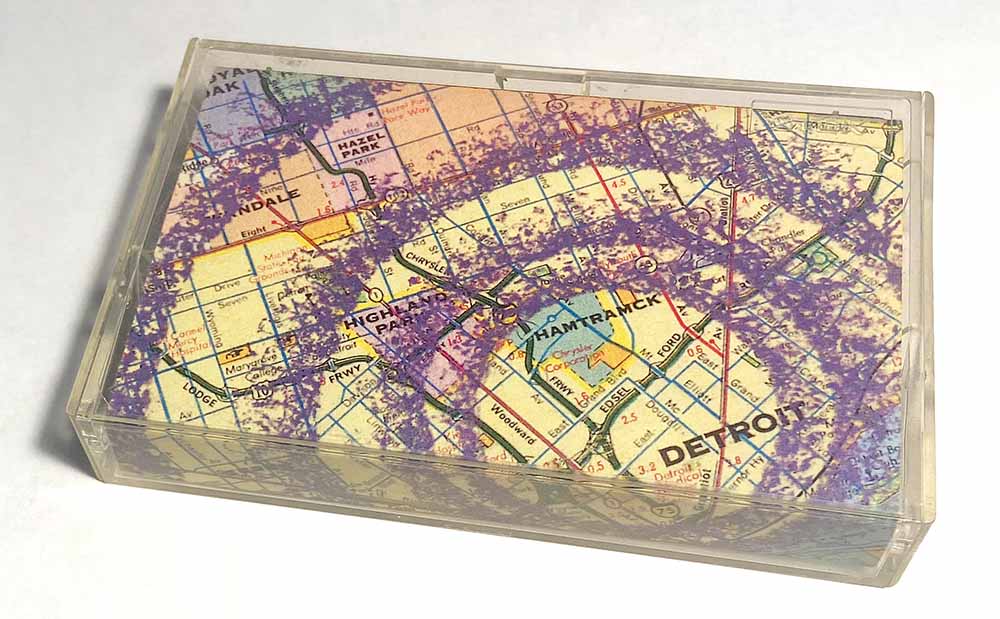
One aspect of my interest in making these has been to further my musical education. Sometimes that’s my intent; other times, it just happens. For example, I first saw Carl Perkins’ name on a Beatles album. The Fabs recorded three of his songs on early records, so it seemed important to include him on the Granddads tape. To do that I had to buy an album, enabling me to hear other songs Perkins wrote and recorded; that way, I discovered he’d also penned “Blue Suede Shoes,” one of Elvis’s early hits.
Some years later I realized another, quite different, motivation: I really enjoy curating material, that is, gathering together and presenting things that share various attributes. This came to me after designing several books and my first web site, but the process of identifying, editing, organizing and arranging a volume of material, in order to make it digestible and enjoyable, is the crux of creating music compilations, too.
Speaking of both education and curation, in the early 1980s a good and longtime friend, Cork Crawbaugh, and I developed an interest in Japanese “techno-pop.” This was exotic stuff at the time, nothing you’d hear on even the most eclectic radio programs. Between us we bought dozens of LPs, and ultimately put a selection of our favorite songs onto a cassette. The insert I made was the most elaborate cassette package I ever created; the design involved a photo shoot, and we even wrote liner notes, listing some highlight albums and prominent players in the genre.
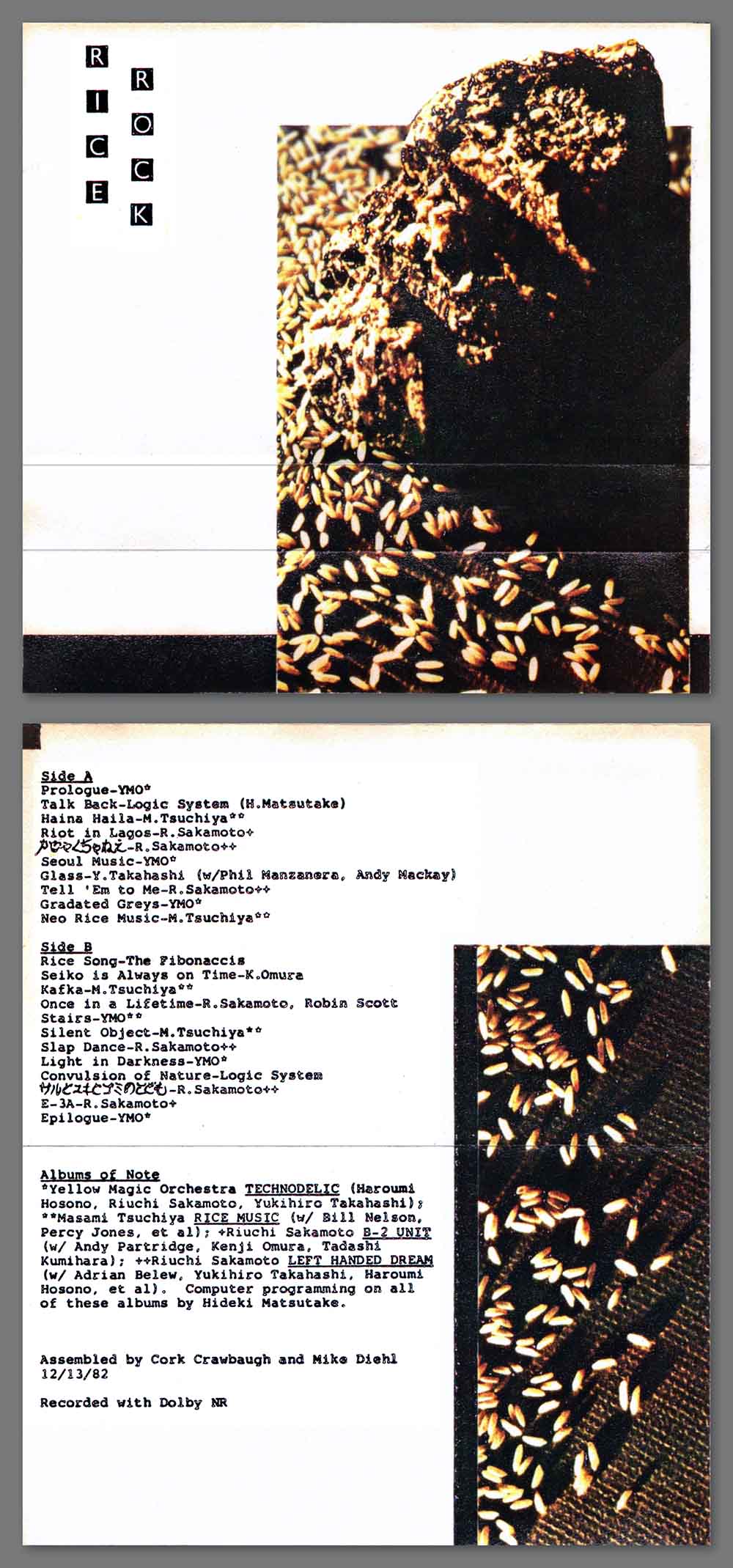
Subject matter for my compilations expanded over the years. Tapes were made for parties and beach trips, and in response to various romantic experiences — a popular indulgence for us mix-tapers. It was a running theme in the movie “High Fidelity” (2000); here’s a clip.
I made loads of these things, as did a number of my friends. We traded tapes, naturally, and occasionally collaborated on them. In a few cases, mixes were made by shipping a cassette back and forth in the mail, a friend and I alternating songs, each tune a response to the one put down previously.
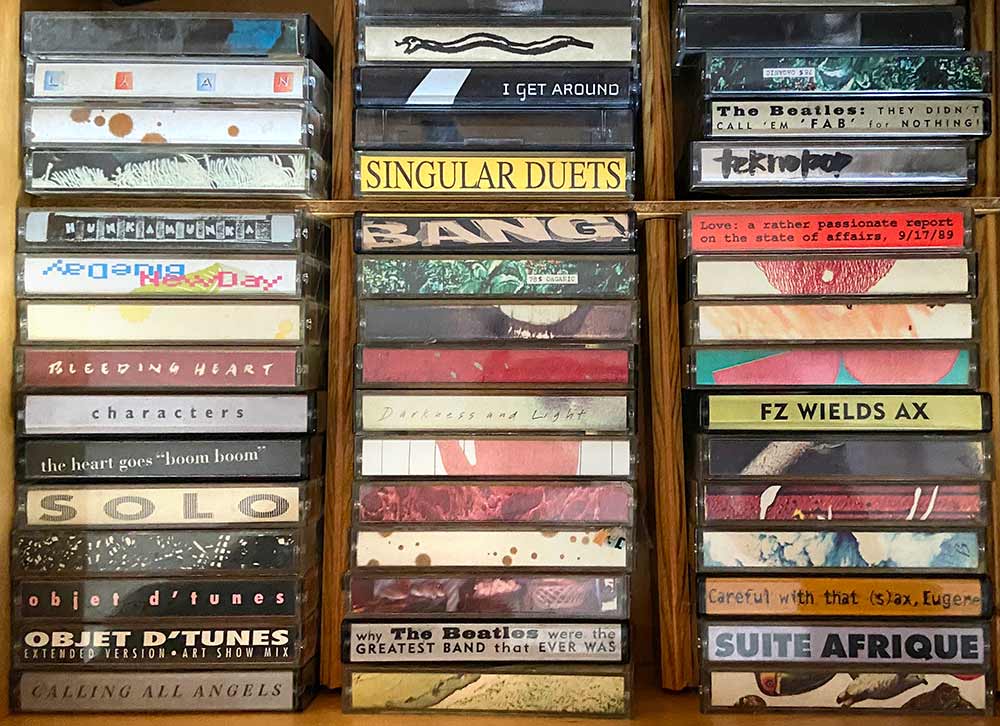
With cassettes, only one song can be recorded at a time, of course, and they must be tracked onto the cassette in sequence. More times than I care to recall, the tape would run out seconds before the last song was over. Once I was able to make compilations on CD, that problem evaporated; it’s much easier to determine just what songs would fit onto a disc, and altering a sequence is as simple as dragging the file names in a playlist window.
Whenever possible I’ll incorporate tracks from CDs, as there’s more audio information in an .aif (or .wav) file than in an .mp3. And, unlike with cassettes, there is no loss of fidelity in copies made digitally. Making CD folders or inserts is now a digital process, too, although occasionally I’ll integrate hand-made elements, such as the title of my Burt Bacharach compilation.
The inspiration for this disc was a 2013 talk hosted by my client, Live Talks Los Angeles (you can view the event here). Author Mitch Albom (Tuesdays With Morrie) interviewed Bacharach about his then-new book, Anyone Who Had a Heart: My Life and Music, and periodically Albom would interrupt their dialogue to play a song or two from his laptop. I found myself thinking, “He wrote that, too?” Clearly, I needed to learn more about the astounding songwriter.
The sharing of mixes reached a new level when, for several years, I participated in a “music club”; every month one of us would compile and distribute a CD, and as there were a dozen or so people in the club at any given time, it fell on each of us to entertain the rest of the group only about once a year.
Many club discs contained songs of the moment, music that appealed to the member whenever their time to contribute came around. But just as many had themes, and those varied wildly. Likewise, the presentations ran the gamut; we’d be as likely to get a plain CD and a song list printed out from iTunes tucked into a paper sleeve as we’d be to get a professionally designed package; the club, after all, was comprised mostly of folks from the entertainment industry. Here’s a snapshot of just a handful of the many dozens of CDs I collected from my time in the group.
. . .
As my chops developed technically, for example learning how to use an audio app to assure a consistent volume across a collection and another app to create pleasing segues between tunes, the nature of the mixes evolved. I experimented with the idea of creating a flow using songs from a range of genres. Here’s the track list for one of the first of this sort:
Portrait of Tracy • Jaco Pastorius
Spring is Here • Bill Evans
Mood Indigo • Marian McPartland and Donald Fagen
Isfahan • The Duke Ellington Orchestra
Am I Blue (live) • Ray Charles
Someone to Watch Over Me • Ella Fitzgerald
I Want to Be With You • Aretha Franklin
Almost Blue • Elvis Costello
Stardust • Willie Nelson
Silver Blue • J.D. Souther
Find a River • Lowell George
The Rain Song • Led Zeppelin
The Tourist • Radiohead
Because • The Beatles
The Warmth of the Sun • Brian Wilson
Their Hearts Were Full of Spring • Four Freshmen
Milonga del Angel • The Swingle Singers
Secret Love • Ry Cooder and Manuel Galbán
These tunes have in common only two things: They’re slow-paced, and I consider them exquisitely beautiful. I’ve made three more discs using these criteria (their four covers are pictured below) and a couple others are in development. Sharing some of these, however, has confirmed that, to paraphrase the adage, beauty in popular music is in the ear of the beholder.
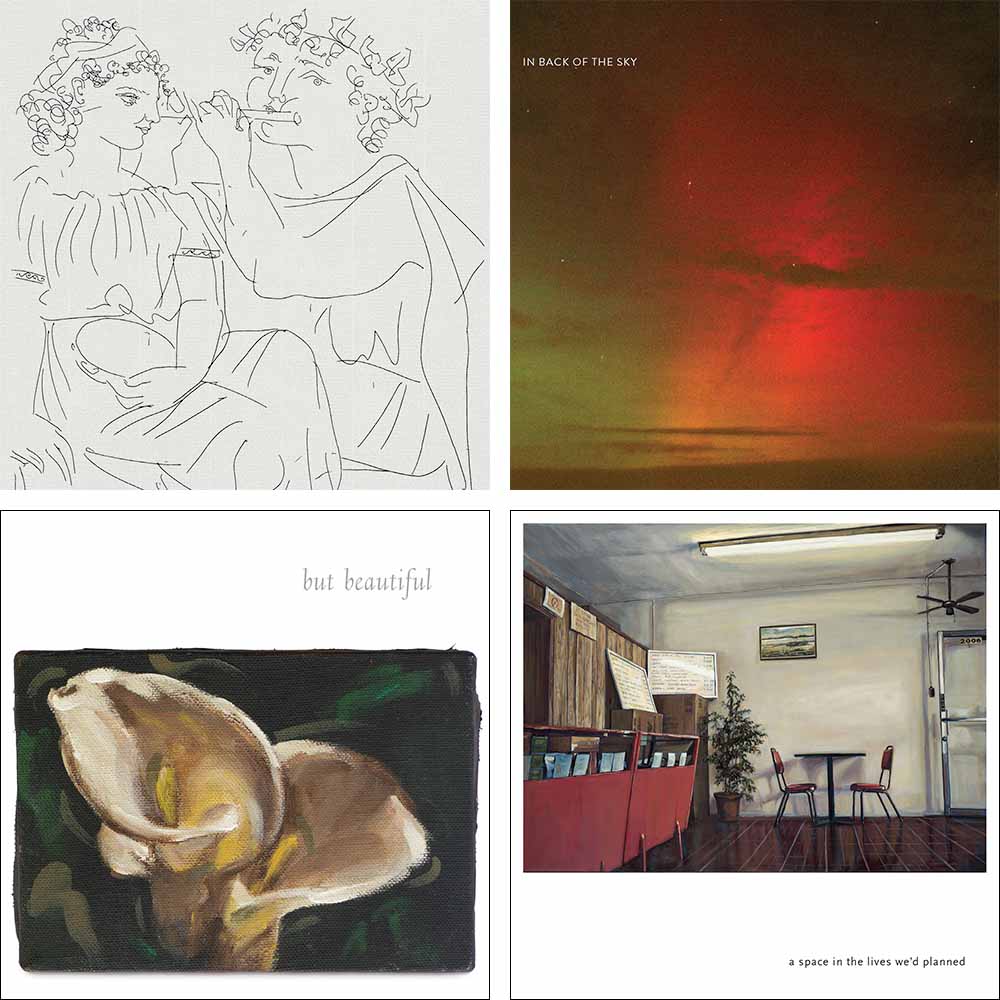
A suitable playlist can be made for nearly any occasion; here’s how I commemorated my entry into a second half-century:
The Birthday Present • Loudon Wainright III
Old Man Down The Road • John Fogerty
Old Hippie • The Bellamy Brothers
Old Folks Boogie • Little Feat
Shrivel Up • Devo
No One Lives Forever • Oingo Boingo
Enjoy Yourself (It’s Later Than You Think) • Guy Lombardo
Let the Good Times Roll • Ray Charles
Lust for Life • Iggy Pop
Got a Lot of Living To Do • Elvis Presley
Nineteen Forever • Joe Jackson
Youth of 1000 Summers • Van Morrison
Young at Heart • Jimmy Durante
Forever Young • Bob Dylan
Still Crazy After All These Years • Willie Nelson
Lucky Man • The Verve
In My Life • The Beatles
What a Wonderful World • Louis Armstrong
A few years ago a director/cinematographer friend was pitching a movie and asked me to think about songs that might fit the story and mood. It was not an upbeat tale, so the songs I compiled made for a somber listening experience. Nonetheless, it was a fun challenge, and it gave me even more respect for music supervisors, people who make recommendations to directors of songs to complement a film’s dialog and visuals.
On a different somber note, in October 2001 my niece Lindsay and I collaborated on a requiem of sorts for those lost on 9/11, crafting an expression of grief and sadness and solidarity through the lyrics and melodies of female artists.
The Promise • Tracy Chapman
Everybody Hurts • The Corrs
I’ll Stand by You • Pretenders
I Shall Believe • Sheryl Crow
Have a Little Faith in Me • Jewel
Kissing You • Des’ree
Nothing Compares 2 U • Sinead O’Conner
I Know You by Heart • Eva Cassidy
Songbird • Fleetwood Mac
For You Only for You • Julia Fordham
Wash Me Clean • k.d. lang
In My Life • Judy Collins
Comin’ Back to Me • Rickie Lee Jones
One Hand, One Heart • Tuck and Patti
I Will Remember You • Sarah McLachlan
On a more upbeat note, when I got a new car some years back I made two spirited compilations to play on the road. The first was a collection of King Crimson songs — all instrumental, and all performed live. The second was entirely Santana; all those songs, too, are instrumental, but they’re studio recordings. Both mixes have the effect of transporting me elsewhere, whether I’m behind the wheel or sunk into a sofa.
Some of you might remember 2020. And some of you might prefer to forget it — the year was by most measures a horrible one. We endured a pandemic before there were vaccines; we witnessed George Floyd’s murder and the demonstrations that followed; and 2020 was, effectively, the fifth year Donald Trump dominated the news — just to name a few highlights. Naturally, I responded to that challenging time with a playlist.
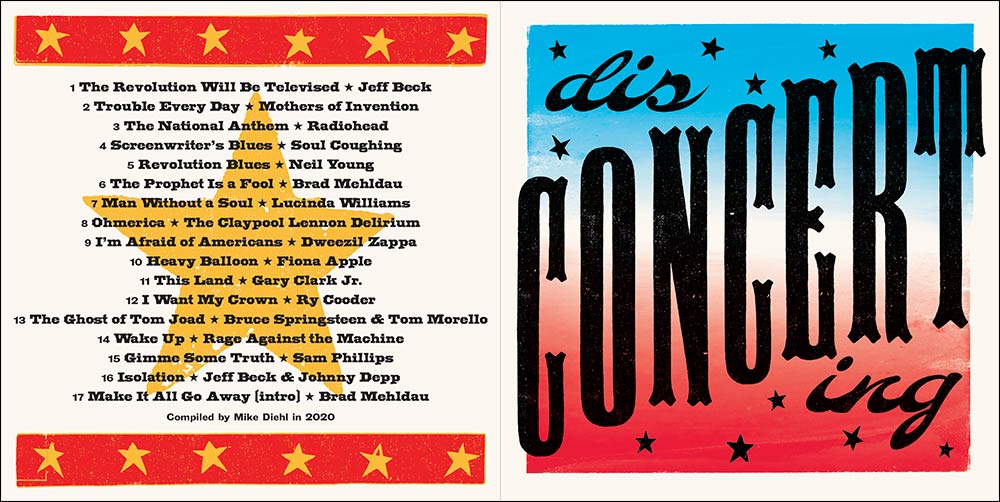
More than once someone has said they think my mixes have commercial potential. A few years ago I asked an A&R executive at Universal Music about this. He’s someone who’s overseen dozens, if not hundreds, of compilations. He told me that a label must own most or all of the publishing rights for a compilation to make sense financially. That explains why most of the compilations you see are best-of albums by one artist. Some labels, however, do release various-artist discs primarily or exclusively (Ace, a British outfit, does this really well) but you tend not to see “big” songs on their CDs; the royalties are too expensive.
Armed with this information I proposed to Universal a series of albums, each featuring multiple recordings of a single “Great American Song.” You might imagine that a tiresome listen, but artists’ interpretations of classic songs vary hugely. For any student of music, or for that matter any fan of popular music, collections like this can be enjoyable, even revelatory. I pointed out that this is not an original idea; at the time I drafted my proposal, there existed at least four commercial albums dedicated to one song, “Louie Louie.”
I proposed a series of releases focusing on songs by great American songwriters such as George and Ira Gershwin, Cole Porter, Jerome Kern and Rogers & Hart, as well as tunes ranging from “Mystery Train” to “Have Yourself a Merry Little Christmas” — songs that have been recorded by dozens, if not hundreds, of artists. To prove my thesis, I compiled CDs of “Summertime” and Jimi Hendrix’ “Red House.” I recommended that the concept could be augmented by releasing CD/DVD packages, as videos of people performing songs is, to most folks, more entertaining than the music alone. And I proposed a web site with photos and historical and biographical info, in addition to audio and video assets. This was, I should note, years before YouTube became such a reliable repository for both audio and video of virtually any song that exists. Bottom line, the proposal went nowhere — but it was a kick to develop the idea and the presentation.
. . .
Music is enough.
A great DJ can string together songs that, in the aggregate, capture a feeling or an idea or an era or a musical genre, elevating and transporting a listener, and perhaps enlightening him, too. As is true with any curated work, from a gallery art show to a well edited art book, the experience of a curated collection of songs can be greater than that of any of the songs individually. And it isn’t necessary to construct a literal narrative, telling a story from one song to the next using lyrics alone; sonic elements — instrumentation, rhythm, musical genre and many more attributes — can become threads that weave a sequence of songs together into a coherent whole.
Of course, these ideas apply to great albums of any description. While most of us will never create a Pet Sounds or Abbey Road or Dark Side of the Moon, though, we might conjure up a mix that is personally as satisfying and perhaps more meaningful.
For me, a successful mix — or a great album — is like audio theater; it can be an experience deserving of, and even demanding, all of my attention.
Sitting in front of the hi-fi listening to music I love at fairly high volume isn’t only enjoyable, it can be cathartic. A recent Los Angeles Times article reported that, “In Los Angeles, a search on Yelp reveals dozens of practitioners claiming to ‘retune’ the spirit to its natural frequency with sound baths.” The image that’s come to me at times is of a light bath — specifically, of the Aurora Borealis: as our planet’s magnetic fields redirect energized particles gushing out from the sun into luminescent cloud- and curtain-like patterns, I’ve felt that music washing over me reorders the very molecules of my being. Naturally, a playlist of songs I know to resonate with me in some way is guaranteed to evoke that sensation.
When 70 or 80 minutes of music can manifest into an enjoyable and engaging musical journey, and be worthy of someone’s full attention throughout, the compilation is a success. And who knows, at its most successful, it might well “retune the spirit to its natural frequency”! As I undertake each new mixtape, that’s what I strive to achieve — for myself, at least, and perhaps others too.
